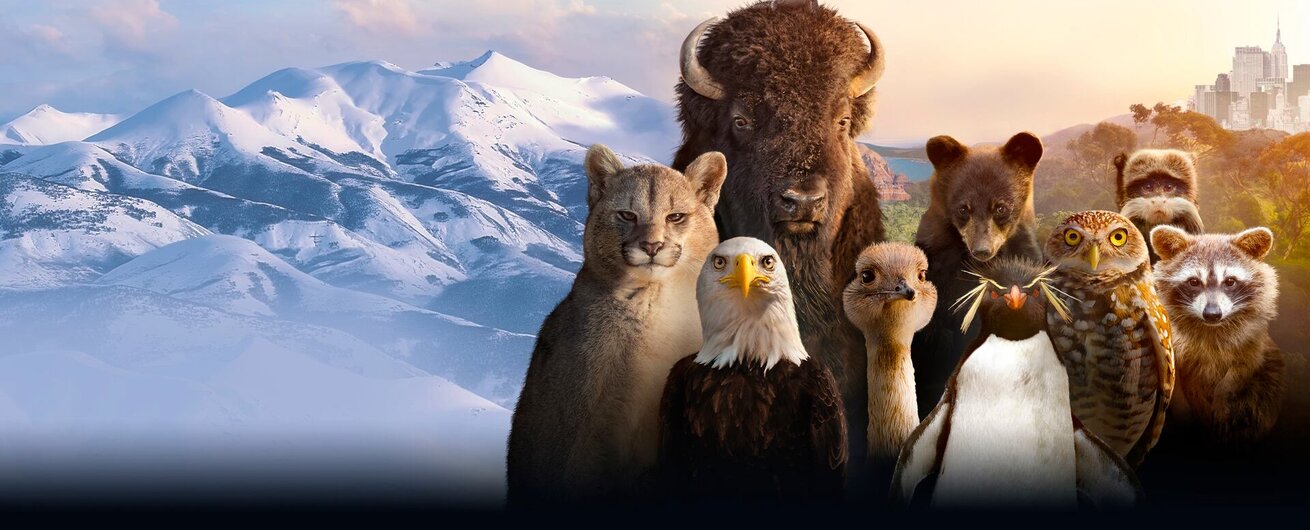The Americas Explained: The Secret Lives of the 9-Brained Giant Pacific Octopus
The Americas captures the mating practices of wild giant Pacific octopuses on film for the first time.
The sprawling documentary series, The Americas takes viewers to the southern tip of Chile, the frozen north of Alaska and Canada, and all points between to explore our planet’s largest supercontinent. The series is the result of expeditions on both sides of the equator, carried out over the course of years, and using cutting-edge technologies to capture events and behaviors never seen before.
In a recent episode, viewers visited “The West Coast,” home of the Pacific Ocean, base jumping salamanders, interspecies hunting strategies, expansive forests, and the mysterious undersea lives of the giant Pacific octopus.
The Americas explores the life and death of the giant Pacific octopus
If you know where and how to look, you can find the giant Pacific octopus swimming the shallow waters of the Pacific Ocean. It’s the largest octopus in the world, with a two-foot body and arms stretching 13 feet or more. Despite their exceptional size, they are masters of hide and seek, slipping out of their rocky dens to hunt crabs, lobsters, and anything else they can get their tentacles around. Because of their squishy bodies, they can squeeze into any space large enough for their beaks to fit through.
At the top of Monterey Canyon, off the coast of California, nutrient-rich waters flow upward from the seafloor, supporting robust reef ecosystems. There, the giant Pacific octopus hunts the shallow reef waters for food. Using a combination of camouflage, shapeshifting, and 9 brains (one in their head and one in each arm), octopuses pounce on crabs, smother and crush them, then break apart their shells and suck out their insides.
RELATED: Everything To Know about The Americas on NBC
With more than 2,000 suction cups in total, giant Pacific octopuses eat a pound or more of food each day, putting on body weight for their grand finale. It’s important for a mature octopus to eat as much as they can to top off their energy reserves. Once they’re ready to mate, they never eat again. With the last meal eaten, a female octopus sends out a scent, signaling she’s ready for a mate.
A male octopus follows that scent to the female's den and, using a special mating arm, transfers a packet of sperm. The mating process (never before caught on film in the wild) can last for hours, both octopuses gently embracing. When it’s over, the male goes on his way but the female stays in place. In fact, she’s about to seal herself inside the den and won’t leave that spot for the rest of her life.
“What I find extraordinary about that story is how nature has evolved that level of ritual and complexity,” The Americas executive producer Mike Gunton told NBC Insider. “Of course, it makes adaptive sense. If you’re going to be vulnerable for months and months, it makes perfect sense to lock yourself away in a cave and block up the door.”
Giant Pacific octopuses make the ultimate parental sacrifice
The giant Pacific octopus spends most of its life in its den, a tight, small space where it can hole up for safety. You can identify them by the piles of discarded crab shells littered outside the entrance. Once mating is completed, the female creates a barricade by pulling in rocks to block up the den’s entrance. By the time she’s finished, nothing can get in and nothing can get out.
RELATED: NBC Nature Docuseries The Americas Announces a Making Of Peacock Special (DETAILS)
For the next 9 months, the octopus does nothing but care for her eggs, 100,000 of them. Every day she gently runs her tentacles through the egg bundles, cleaning them off and bathing them in oxygen-rich water. Every day she gets a little weaker, surviving on whatever energy remains in her body.
“It’s remarkably poignant. I don’t think anyone could watch that without being moved… that sort of jaw dropping dedication. Of course, you have to be careful not to be too anthropomorphic, because there is an adaptive reason why this happens,” Gunton said. “Nevertheless, you cannot help but be moved, because if the octopus gets to that point in their lives, they are going to die. That is the end of their lives.”
Finally, after nearly a year, the eggs hatch and 100,000 new giant Pacific octopuses (though not so giant yet, they are only about the size of a grain of rice) flutter away into the deep. Their fates are uncertain, only about 1% of giant Pacific octopus babies survive to adulthood, but the mother octopus’ fate is sealed. Her body is spent, and she dies, having finished her life’s great work.
Where to watch The Americas
New episodes of The Americas air weekly Sundays at 8:00 p.m. ET on NBC, and stream on Peacock the following day!



































